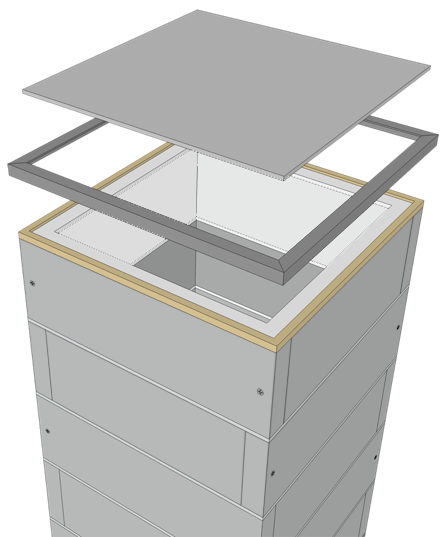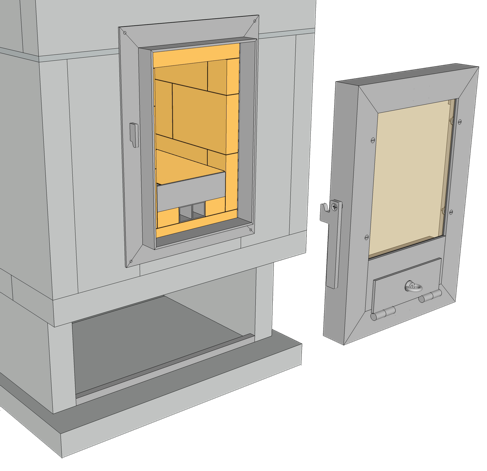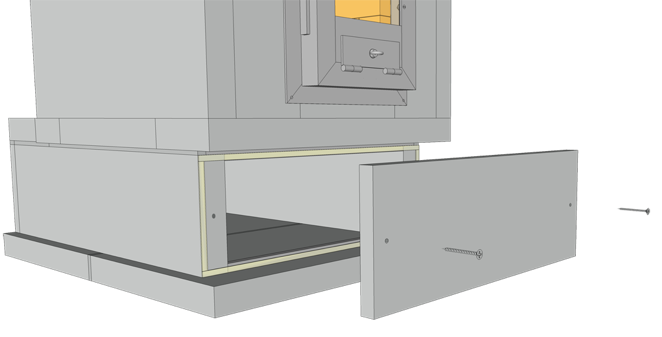Step 7 Assembly
You can make cob very well with 1 part clay powder and 1 part fine sand. Mix well, and then add water.
Top frame
Apply a layer of cob to the top of the bell and press the steel frame into it. Check carefully that it is level. Remove the cob that squeezes out. Height (cob + frame) must be ± 15 mm.
Top plate
Now place four strips of Superwool on the inside of the frame (mind the overlap). Place the top plate; between the plate and the frame is a margin of 4 mm.
Take apart frame and door and place the frame. Make sure the distance between the frame and the sides and top of the firebox is the same.
Mark the exact location of the holes, remove the frame and drill the holes. Insert plugs and fix the frame.
Seal the edges with some sealant; use masking tape to get it nice and tight. Then put the door back in.
Sweep access hatch
One more thing: the hatch at the bottom of the stove. At 25 mm from the edge, you drill two holes in the middle, both in the hatch and in the two blocks (see drawing). Stick draft strip on the blocks and the tubes: the seal must be airtight. Now screw the hatch into place.
During the running-in period, condensation water will come out of the flue pipe. To catch this, place a pan underneath. Every now and then during this process, you open the hatch to empty the pan. Once the running-in process is over, this is no longer necessary.
Installing the frame and door unit
During firing, ash ends up in the base layer. Before a new heating season starts, it is therefore important to open the hatch and sweep that base layer.
It is recommended to place a tile in front of the stove: this way you protect your floor against sparks and ashes.

Superwool

Cob


